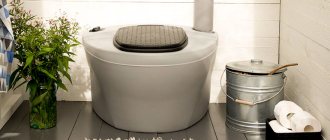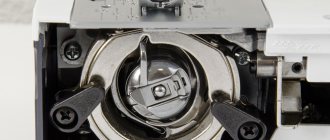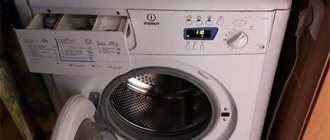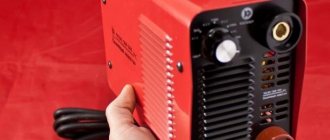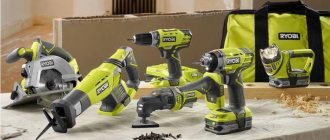If you have to cultivate large areas of soil, it is not always convenient to do this with a shovel or other hand tools. In this case, it is better to use a cultivator, the choice of which depends on several factors and conditions.
First, it’s worth defining the concept of “cultivator”. This is a specialized gardening equipment, the main purpose of which is the treatment (cultivation) of the upper sections of the soil by loosening it. Here there is often confusion regarding the question of what is a cultivator and what is a walk-behind tractor, another popular type of equipment. A walk-behind tractor is a heavy multifunctional agricultural equipment, weighing from 70 kg, equipped with an internal combustion engine and capable of performing a full range of agricultural work: cultivation, hilling, plowing, potato harvesting. When purchasing additional attachments, walk-behind tractors are also capable of removing snow, mowing grass, watering the garden, transporting goods using trailers, and so on. That is, a walk-behind tractor can be a cultivator, but not vice versa.
The advantage of a cultivator compared to walk-behind tractors is maneuverability, lightness (light weight) and fuel economy. In a garden or vegetable garden, this technique is indispensable for digging, loosening and weeding: it has proven itself well when cultivating the soil of greenhouses, flower beds, the ground between trees and rows of vegetables, under bushes.
Cultivator device
A standard cultivator consists of a frame on which the engine, transmission, working shaft with working tools, control handles, one or two transport wheels, and a protective visor are mounted.
The main working tool when working with cultivators are tillers. For most cultivator models, they are made as connections of two, four or six fairly easily removable sections. By selecting their number, they create the processing width required at this stage of work. The rotation of the cultivator cutters leads to cutting the soil into layers, crushing them and mixing them. In this case, the cultivator does not have drive wheels; it moves forward with the help of cutters, which also move, “push” it forward and cause movement.
In addition to the standard tillers described above, cultivators can, if desired, be equipped with a variety of attachments, which significantly expand the possibilities of performing agricultural work on them. Of course, such an additional “attachment” is purchased separately by the owners of the cultivators, so when choosing a cultivator for purchase, it will be useful to compare not only their technical parameters, but also the range of their equipment, their compatibility with various attachment options.
Recommendations for choosing a cultivator
- Try to study the market of cultivator manufacturers.
- If you are purchasing a heavy, powerful device, give preference to wheels without tubes. Wheels with tubes can lose air, so you will have to constantly pump them up.
- Select engine oil from engine recommendations.
- Pay attention to the quality of additional accessories for the cultivator model you have chosen. If they are of poor quality, it is better to refuse such a model.
- After a long break in operation, the device must be warmed up well at idle.
Modern cultivators for country houses can significantly save the time and effort of a working person. It will not matter what size your plot is.
Today, manufacturers offer models for different plot sizes, with different capacities and different attachments.
engine's type
Engines can be gasoline, diesel, electric. Gasoline engines, in turn, can be two-stroke or four-stroke. Electric motors can be powered either from the mains, that is, they must be constantly connected to an outlet using an electrical cable of the required length, or from a built-in battery.
Electric engines and two-stroke gasoline engines are usually used in light class cultivators. Four-stroke gasoline and diesel engines are installed on medium and heavy class cultivators. The difficulty of operating cultivators with a gasoline engine is the need for constant maintenance. Fuel should be added regularly and oil should be used to lubricate parts. In addition, each model requires certain brands of oil and fuel, so you must strictly follow the instructions. Compared to electric models, gasoline models make too much noise. It is worth remembering about gasoline exhausts, harmful plants, soil and people. Models with a two-stroke engine are cheaper and simpler, but they require more fuel.
Electric cultivators do not have as much power as models with an internal combustion engine, but are great for small areas. Also, according to the observations of some users of electric models, vibration can irritate bees if work is done near the apiary.
Petrol cultivator Crosser CR-K12
Diesel cultivator ZIGZAG DT 902
Electric cultivator FERMER F-105
What oil to pour into the cultivator
To reduce the degree of friction between the elements and provide additional cooling, you need to service the engine, namely, replace the oil in the gearbox and motor.
Basic classification. Oils are available in summer (high viscosity), winter (low viscosity) and all-season (universal). The load is reduced due to an increase in oil viscosity, and at different temperatures this process occurs differently, hence the differences between oils.
Depending on the type of oil base, there are:
- Mineral oils. They're cheap, but you shouldn't expect big changes from them. Such oils do not always withstand the load.
- Semi-synthetic. Inexpensive and high quality, suitable for most equipment models.
- Synthetic. Provide high protection against wear and overheating of the motor.
Oils will be different for two-stroke and four-stroke engines.
Transmission oil is poured into the gearbox - one of the most important elements of the unit - and reduces wear. When choosing, the degree of viscosity, operating temperature and type of base, and the features of the gearbox are taken into account.
Oils for diesel walk-behind tractors are classified as follows:
Oils for gasoline cultivators have their own classification:
- SA - used if mechanical stress is low and an additive is not needed in the composition.
- SB – suitable for medium voltage, reducing the degree of oxidation.
- SC – for engines without PSV system. Provides protection against deposits.
It is not recommended to pour automobile oil into the cultivator.
Engine power and transmission type
Power is expressed in horsepower, and depending on their quantity, such devices are divided into three types: light (up to 4 hp), medium (4-6 hp) and heavy (more than 6 hp) devices. Typically, the power of a cultivator is directly related to weight. The greater the power of the device, the easier and faster it cultivates the land. Engine displacement – for models with a gasoline unit. The “golden mean” rule applies here. A very weak engine with a small displacement will not be able to cope with an average load. A large and powerful engine will consume a lot of fuel. The amount of fuel consumption ranges from 1-2.5 liters per hour of intensive work.
The transmission transmits rotation from the engine to the working tools - cultivator cutters. The transmission also includes a clutch. This is a device that allows you to turn on and off rotation from the engine to the working body. The following types of transmissions are used in cultivators: gear-worm transmissions, belt-tooth-chain transmissions and some others.
Lightweight cultivator Krones GHA35
Medium-power cultivator MTD T/245
Heavy cultivator Skiper SK 700
Popular models and manufacturers
Champion GC
Rating of the best cultivators for working with the ground, from simple to high-power:
- Greenworks GTL. Lightweight cultivator for cultivating beds in greenhouses. The cutting width is 250 mm, which is enough to get the cutters into the narrowest areas. It is used for weeding the soil between tomatoes, cucumbers and other densely planted crops. The wings on the body protect the operator from the mined earth. Thanks to wheels with high tread, the model easily makes its way through loose soil. Total weight – 16 kg. Cutting depth – up to 200 mm;
- Champion GC. A simple gasoline model used in the garden or on the territory of a country house for processing land strips up to 250 mm wide. An economical unit that consumes 550 g of fuel per hour. Weight – 15.85 kg. 3200 rpm is enough for fine grinding of soil. The cutting depth is 225 mm, which will allow you to loosen the soil next to the trees. Due to exhaust emissions, the model is not suitable for work in a greenhouse;
- Hammer RT-50A. For a spacious vegetable garden or courtyard of a country house. In one pass, this cultivator can cover an area up to 500 mm wide, which is ensured by four cutters with blades curved to the sides. The power of this gasoline model is 5 hp, which is enough to loosen compacted or dry soil. Tank capacity – 1.2 liters (90 minutes of non-stop operation). Cutting depth – 360 mm. Treatment area – no more than 600 m2. But this model weighs a lot - 46 kg;
- Partner PFT85-800R. This is the choice for large vegetable gardens. The ground is processed with six cutters, each with four teeth. A working width of 830 mm is enough to level or plow the soil. Thanks to the reverse gear, you don't have to stop the vehicle to turn around. Soil cutting depth – 280 mm. Power – 4.4 hp. Volume tank 2.8 l;
- Elitech KB 60H. It is used for developing virgin soil and plowing spacious fields for future sowing. Six adjustable cutters will “cut” both narrow strips of 330 mm and wide strips of 850 mm. Power – 6.5 hp. Fuel tank volume – 3.6 l. Engine speed – 3400 rpm. Cutting depth – 330 mm. Fuel consumption is economical - 400 g per hour of operation. Weighs 56 kg;
- Huter GMC-7.0. A universal cultivator equipped with a gearbox (2 forward and 1 reverse speeds). Can be used on both soft and hard ground. The plowing width is adjustable and ranges from 600 to 830 mm. Cutting depth – 300 mm. Power – 7 hp Tank capacity – 3.6 l.
Other manufacturers include the following: Patriot, Daewoo, Hyundai, Caiman, Sturm, DDE, PROFI, PRORAB, Husqvarna, ECHO.
When choosing a cultivator, first of all, take into account the depth and width of the cut, the quality of the cultivated land and the area of the site. This is a garden and country assistant who will take on the lion's share of physical labor and reduce the time it takes to complete the work.
Maximum width and depth of cultivation
Tilling width is the maximum strip width that the cultivator can cover. A very narrow coverage adds time that is required for high-quality soil cultivation. The width of the processed strip depends on the engine power. Approximately 1 hp required for twenty centimeters of land covered in width. A wide grip is more convenient for processing large areas of land. If weeding between beds is important, then a narrow grip is more convenient.
The tillage depth reflects the distance to which the cultivator cutters penetrate the soil. As a rule, it is directly proportional to the diameter of the cutters. In some cases, the manufacturer separately indicates the cutting depth and cutter diameter. The average value usually does not exceed 25 cm. The tillage depth is set by the adjustable position of the coulter (a strong metal strip that is vertically fixed to the rear of the cultivator). The cutting width is usually adjusted by installing various cutters.
Cultivator with a maximum cultivation width of 1050 mm ZIGZAG GT 903
Cultivator with a maximum cultivation depth of 350 mm Workmaster WT-85
What is a cultivator and why is it needed?
So, a cultivator is a machine that is used in agriculture. Its purpose is to cultivate the soil with special cutters. It is possible to equip it with attachments.
Each model has its own performance, which depends on the cultivator engine, as well as on the working width. Used for soil cultivation.
Types of cutters and their speed
The main tool when working with cultivators are tillers. For most cultivator models, they are made as connections of two, four or six fairly easily removable sections. By selecting their number, they create the processing width required at this stage of work. Of course, when work is to be done on heavy, clayey soils, the number of installed sections of soil cutters will need to be reduced. Moreover, it will be important to do this in cases where a cultivator will have to plow up virgin soil or restore agricultural cultivation of a long-abandoned site.
Milling cutters can be either non-separable or collapsible. It is better to choose collapsible knives, since they can be easily replaced if necessary. There are two types of cutter design: “crow’s feet” and with saber-shaped knives.
The last option is the most popular and can be called standard. After all, these types of products are time-tested: their effectiveness is quite high. They have the optimal shape and material. The knives are made from high-quality, high-strength steel.
As for crow's feet products, such products are used for hard soils. They have a solid structure, non-dismountable, due to this their strength is high. Such products are effective in controlling weeds and processing virgin soil. It should be noted that the cutter is a self-sharpening tool. No additional manipulations in this direction are required.
The optimal cutter speed for cultivators is considered to be 150-170 rpm. At this speed of rotation of the cutter, deep cultivation can be done to a depth of up to 15 centimeters. At 200-220 rpm, you can loosen the top layer of soil to a depth of 8-10 centimeters and do pre-sowing cultivation to a depth of 6 centimeters. And increasing the speed to 275-330 ensures effective loosening of row spacing and destruction of the soil crust.
Cultivator with saber blades SunGarden T/35
Cultivator with houndstooth cutters Zigzag GT 134
How to assemble cutter-cultivators on a walk-behind tractor
Before cultivating the soil, you need to assemble the cutters. They will help break up lumps and also pull out weeds with rhizomes.
The more powerful the equipment, the more cutters there will be - 24, 32 or 40. There may be 3-4 blades per section. 3 – if they are straight, 4 – offset.
When there are 3 blades, first install one front blade on the axle and secure with a bolt. Remove it to secure another blade. If you installed the first blade on the outside of the plate, mount the remaining two on the inside of the mounting plate.
When there are 4 blades, first distribute them into left and right ones and assemble them one by one - first the left one, then 1 right one, and so on.
You can assemble the cutters on a walk-behind tractor in several stages:
1. Install the blades on the mounting sockets of the flanges so that the cutting edge of each blade is directed along the movement of the walk-behind tractor.
2. Bolt the blades. If the part is o, it should face to the right, “L” – to the left.
3. Fix each subsequent section with the previous one, securing with pins and blocking with a pin.
4. Secure the cutting disc with a bolt.
Make sure that the flanges are located at a distance of 10 cm relative to each other, and each of them is rotated 45 ⁰C to the other.
Number of speeds
The number of forward speeds allows you to adjust the speed of the cutter and determine the type of work with the soil as described above. On modern cultivators, it is desirable to have a reverse gear. Light and ultra-light models, of course, do not have reverse gear, but they have a special handle to make it convenient to lift the cultivator and turn it in the right direction. This will be especially useful when working near various obstacles (fences, for example) or in some narrow, limited areas when you constantly need to make an effort to rearrange the cultivator. Heavy class devices weighing more than 60 kg have reverse as standard.
Reverse cultivator FERMER FM-701MS
How does a cultivator differ from a walk-behind tractor?
Cultivators and walk-behind tractors have become so firmly established in the everyday life of those who work on land plots that they don’t even think about whether there are differences between them. But differences still exist. First of all, they are related to the functions performed.
Medium weight cultivator
The main purpose of the cultivator is to cultivate the land. But the walk-behind tractor, in addition to this, is also capable of transporting cargo, chopping wood or clearing snow, as well as performing some other operations. Modern models of cultivators may have an electric motor (however, they are not very popular), but walk-behind tractors do not have this. They only have a diesel or gasoline engine.
Walk-behind tractor
Walk-behind tractors have a special power take-off mechanism; they move on wheels or earth hooks. Such characteristics are found only in the most powerful models of cultivators. Walk-behind tractors are much heavier. They are much more expensive than cultivators. That is why owners of small plots prefer cultivators.
Classes:
1. Ultra-light motor cultivators - Engine power - up to 1.5 hp. — Weight — up to 15 kg (for manufacturers from other companies with a weight of up to 20 kg and a power of up to 3 hp). — The depth of plowing with this type should not exceed 8 cm. Therefore, ultra-light garden cultivators are mainly used when working in small areas, flower beds and flower beds. — Working width — 20-30 cm. This ensures comfortable work when cultivating hard-to-reach places, such as row spacing, weeding and loosening in narrow places. They are very light and easy to transport, both on public transport and in the trunk of a personal car.
2. Light motor cultivators - Engine power - from 2.5 to 4.5 hp. - Weight - up to 40 kg - Plowing depth reaches 15-18 cm - Working width - 40-50 cm. All this allows you to obtain soil plowing productivity 1.5-2 times higher than with the help of ultra-light garden petrol cultivators. True, lightweight devices have a small drawback: when working with soil, quite strong vibration occurs, which is not entirely comfortable when working.
3. Medium motor cultivators - Engine power - 4-6 hp, - Weight - 45-60 kg. It is very convenient to work with this type of equipment due to its fairly large weight, as this makes them more stable than the previous version of motor cultivators. — Plowing depth — 25-28 cm. — Working width — 40-85 cm. However, there are disadvantages when working with large-grabbing cutters: the difficulty of processing in narrow places on the site and between rows. In addition to forward gear, there is also reverse gear.
4. Heavy motor cultivators - Engine power - from 6 hp. — Weight — more than 60 kg. Working with these cultivators is not difficult, since their weight allows you to pull a plow, trailer, or digger without the help of slipping or an operator. Garden motor cultivators in this category have a gearbox that allows you to expand the possibilities of use in garden plots. The capabilities of heavy cultivators are great: processing not only summer cottages, but also large garden and rural areas.
Note! To use the garden cultivator in areas with a slope, you should use the operating instructions for the unit. Motorized cultivators are divided into those that cultivate at any angle of inclination and those that cultivate at angles of no more than 15-20°, depending on the possibility of soil cultivation. Reversing when working with machinery is very important. Light and ultra-light motor cultivators do not require reverse gear, as they have a handle that provides the operator with any direction. It is also very good to have several gears for moving the cultivator in a forward direction.
Garden assistant
This garden assistant is suitable for different types of work, namely: loosening the soil, weeding the soil on the site and removing weeds. Garden assistants can be divided into 2 types based on the method of power supply: electric and gasoline. If you have a small garden plot and are engaged in organizing small plantings, then a mini cultivator for manual garden use may be suitable for you.
A cultivator is a mechanism that is the equivalent of a regular shovel and is designed for working with soil in a summer cottage, capable of performing many operations:
- Hill up the plantings;
- Divide beds;
- Harrow the ground;
- Weed the sown plants.
A garden cultivator is a lightweight type of gardening equipment, since its weight is usually no more than 50 kg. Different models have different functions. Some, for example, have reverse gear. This mechanism will become an indispensable assistant in a summer cottage and will help cultivate the land, both in large open plantings and when working with greenhouses, bushes, trees, and so on.
Mechanized devices may also have additional operational capabilities associated with removable mechanisms - plows, hillers, special mounted mechanisms used for digging underground fruits, as well as scissors.
Mini cultivator with wheel
Comparative table of cultivator characteristics
| Model | KNK-4 / KNK-4K | KNK-6/2 / KNK-6K/2 | KPSh-5.0 | KPSh-7.2 | KPSh-9.6 | KPU-6 | KPU-8 | KPU-10 | KPU-12 | KPM-8 | KPM - 10 | KPM - 12 | KPM - 14 |
| Productivity for 1 hour of main time (calculated), ha/h | up to 4.8 | up to 7.2 | 5.9 | 8,6 | 11.5 | 6,4-7,6 | 8,1-9,6 | 10,1-14,1 | 12,1-14,1 | 4,8-9,6 | 6,0-12,0 | 7,2-14,4 | 8,4-16,8 |
| Operating speed, km/h | up to 12 | up to 12 | Up to 12 | Up to 12 | 6-12 | 6-15 | |||||||
| Processing depth, cm | 8-16 | Up to 12 | Up to 12 | 5-12 | |||||||||
| Number of S-shaped racks, pcs. | 46 | 65 | 87 | 51 | 61 | 75 | 85 | ||||||
| Paw grip width, mm | 105 | 135 | 155 | 220 | |||||||||
| Number of levelers, pcs. | 4 | 6 | 4 | ||||||||||
| Number of flat-cutting paws, pcs. | 9 | 13 | 32 | 40 | 52 | 60 | 48 | 58 | 70 | 85 | |||
| Working width, m | 4 | 6 | 5 | 7.2 | 9.6 | 6.2 | 8.1 | 10.1 | 12,1 | 8 | 10 | 12 | 14 |
| Number of service personnel | 1 tractor driver | ||||||||||||
| Weight, kg | 1660±5% | 2449±5% | 1450 | 1950 | 2590 | 3100±5% | 4200±5% | 5100±5% | 2220 | 2650 | 2900 | 3450 | |
| Type | Mounted | Trailed | |||||||||||
| Tractor power, hp | 150 | 220 | 80-100 | 110-130 | from 130 | 120-140 | 150-180 | 240-300 | 150-280 | 280 | |||
Cultivators of the KShU series are used not only for tillage in industrial farms, but also on private farms. With their help, it is possible to qualitatively prepare the soil for subsequent sowing work or bring it into proper condition so that it can “rest” under fallow.
A special feature of wide-cut cultivators KShU is the ability to use them on any soil except rocky ones. With their help, you can carry out not only traditional, but also minimal cultivation of the land. It consists in leveling the microrelief.
How to choose an electric one?
This is perhaps one of the easiest cultivators to use. Let's start with the positives. Of course, the main thing is that you do not need to pay for gasoline and oil, as is the case with a gasoline cultivator. All you need is an outlet and a cable. The only expenses are for electricity.
Then it's relative noiselessness. Again, compared to a gasoline cultivator, the noise level of an electric cultivator is relatively low. If you need to work close to home, then you don’t have to worry, because in this type of cultivator there are no unpleasant exhausts or gasoline fumes, this is just a wonderful plus.
Electric
Choosing an electric cultivator for your dacha is not such a difficult problem. Such a cultivator weighs relatively little, from seven to forty kilograms, therefore, even a woman can operate it. Its size is very convenient and it is easy to carry from place to place, or even transport.
Electric cultivators Mantis and Loplosh are excellent units, they have good performance, and in a sense they can be called environmental. Especially if you cultivate the soil indoors. This cultivator will not harm your health.
Rules for working with a motor cultivator
After purchasing a cultivator, the question immediately arises: how to use it correctly? The first step is to study the instructions supplied with this device. Only from it can you learn about certain features of some functional units, including the engine.
Cultivator in action
Work with the cultivator begins by removing the conservation lubricant applied to the surface of the product. This can be done using an old rag soaked in gasoline. Next, they begin to break in the car. This will help the motor “get used” to the load placed on it, and the moving parts will “get used to” and enter normal operating mode. It is worth starting work at low speeds, using a minimum number of cutters. In this mode, the cultivator should work for about 10 hours, after which you can gradually increase the load and add cutters.
Depending on the shape, cultivators are divided into:
- disk - by cultivating the soil with disks, its moisture capacity and aeration increase;
- mechanisms with lancet tools - suitable for working with chernozems and loams, since they only cut the turfed part of the layer.
- ploughshare - resemble a ploughshare plow, but function without wrapping the top layer. They are distinguished by their wide coverage and the possibility of aggregation with tractors of a small traction class;
- milling - immersed in the ground to a depth of 30-35 cm, literally mixing the soil with weeds;
- chisel - cultivate the soil with a series of plowshare devices, preserving the natural properties of the soil.
- forest cultivators cope with soil heavily contaminated with fallen leaves and dry branches;
- discrete micro-raising cultivators - overcome relief areas, producing complete loosening of the soil.
What do you need to know before choosing?
Before you buy a cultivator, you should study everything about this type of equipment. Regarding the quality of the unit itself, you should look at its power, that is, the greater the power, the faster the soil will be processed, and the higher the productivity of your cultivator.
The next thing is how deep the unit goes into the soil, because it determines that the land will be better prepared for planting crops.
If you need your work to go by leaps and bounds, then you should also pay attention to the working width of your working machine.
However, if you need to weed between beds, then a narrow arm cultivator will therefore be better suited for you.
Making your own feed at home will be the best solution for your farm. The Cyclone grain crusher is irreplaceable, useful and very effective.
Currently, walk-behind tractors have become simply necessary equipment for land owners. The Niva walk-behind tractor is an ideal assistant for any summer resident and farmer.
The army ZIL-131 became a real legend of the Soviet and Russian automotive industry. Here you will find all the information about him.
The next point may be the type of engine. Engines are divided into gasoline and electric, but you will read about this in subsequent paragraphs of our article.
Engine
One of the main conditions when choosing a cultivator is its weight. This should come from who will manage it. If you are a woman, then a light or mini-cultivator is perfect for you, because only a man can handle medium-sized and walk-behind tractors, because the weight reaches more than forty kilograms.
When purchasing a cultivator, you should check the quality of the blades , since this is the main tool for cultivating the soil. If the knives are of high quality and made of high-quality material (steel), then such a unit will remain your assistant for a long time.
Last but not least, when you choose a cultivator, you should test it at work so that it fulfills and satisfies all your requirements.
It is also worth noting how to choose a cultivator for a garden to work on an area of 10 acres. If you need a cultivator to cultivate a small plot of land, then you should choose light cultivators, since this type of cultivator is not capable of working with heavy soil.
Average power is perfect for ten acres of land.
I would like to note that medium cultivators are also suitable for processing ten acres . Such units have a power of three to four hp , and they weigh from fifteen to thirty-five kilograms.
Depending on their purpose, cultivators are divided into the following types:
- Steam cultivators perform continuous soil cultivation during pre-sowing work after harrowing;
- Row-crop cultivators destroy weeds, loosen the soil between the rows to better preserve moisture and root nutrition;
- Special cultivators (garden) are necessary for caring for melon, spinning and tea agrocenoses. It is advisable to use them over large areas.

